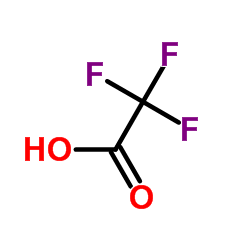| Structure | Name/CAS No. | Articles |
|---|---|---|
 |
Sulfuric acid
CAS:7664-93-9 |
|
 |
trifluoroacetic acid
CAS:76-05-1 |
|
 |
Triisopropylsilane
CAS:6485-79-6 |